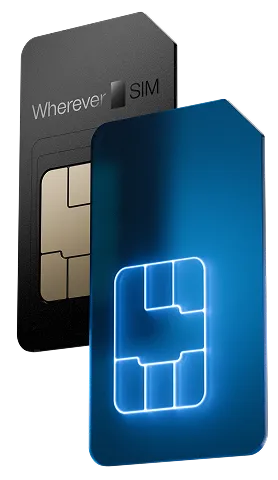Electromobility is seen as the key to the mobility transition and is therefore one of the most important issues of our time. More and more drivers are deciding against combustion engines and opting for more environmentally friendly electric vehicles. However, a reliable and well-developed charging infrastructure for electric vehicles is needed for the transport transition to succeed. Reliable networking for data transmission plays an important role here.

Mobile radio for data transmission from charging stations
Functioning charging stations require more than just power lines. In addition to consumption and status data, smart e-charging stations must also be able to transmit user payment data reliably and securely to operators and payment processors - regardless of location. One option for data transmission is via mobile communications with M2M and IoT SIM cards. The advantage of mobile communications is that the technology is standardized and established and the infrastructure is available almost everywhere. And not just in Germany, but worldwide. For charging station operators in particular, who install charging stations in different countries, this global availability is an important element in simplifying processes.
A recent analysis by the environmental organization Transport & Environment shows that the number of public charging stations in the EU has tripled since 2020 - and the trend is rising: at the end of 2023, 630,000 charging points were available across Europe. In Germany, the number of publicly accessible charging points reached a total of 142,793 in July 2024, including 30,048 fast-charging points with a capacity of over 22 kW. As of the reporting date, there was an average of 17 electric vehicles per publicly accessible charging point. In order to ensure that the charging network covers as much ground as possible, the charging points are widely distributed across the respective countries. Some of them are also located in remote places such as service areas or parking lots, where private individuals can sometimes have problems with the mobile network.
In around 2 percent of Germany as a whole, only one of the major network operators' cell phone networks is available in the 4G standard, while 15 percent is covered by one but not all operators. This means that coverage can still be expanded, especially along highways and important traffic arteries - predestined locations for charging stations and charging parks. The risk of connection interruptions and failures during data transmission is correspondingly high there. If the transfer of payment data from an e-charging station does not work, this is frustrating and disadvantageous for users and charging park operators alike.
Multiple networks at the point of use: advantages of M2M SIMs in e-charging stations
It is precisely this problem that illustrates the relevance of corresponding M2M SIMs for IoT and M2M projects in e-charging stations. This is because M2M and IoT SIM cards use the mobile networks of different network operators. So instead of only ever establishing a connection via the network of a specific network operator, IoT SIM cards use all locally available networks for a stable and reliable connection. But there is also a catch here: controlled roaming or prioritization of a network operator.
M2M SIMs with non-steered roaming for stationary charging infrastructure
Depending on the provider, the IoT SIM card gives priority to the networks of certain providers (steered roaming). In this case, the SIM forces the device to always connect to the network of provider 1 first. This continues until this network is no longer available. Only then does it switch to the network of another network provider. In the worst-case scenario, this means that the user is regularly disconnected. This is risky for stationary and permanently installed IoT SIM cards, such as in e-charging stations. While mobile IoT devices may have better reception again at a different location with the provider, this will rarely change with the stationary SIM. So if the reception of the provider prioritized by the SIM is weak at the place of use, reliable data transmission becomes problematic. With our M2M SIMs, on the other hand, these charging stations enable a connection to the strongest network at the place of use. So it does not depend on the network provider, but only on the network strength. In this case, we speak of uncontrolled roaming. With our M2M SIM cards for e-charging stations, both stationary charging parks and mobile IoT devices are reliably networked everywhere.





